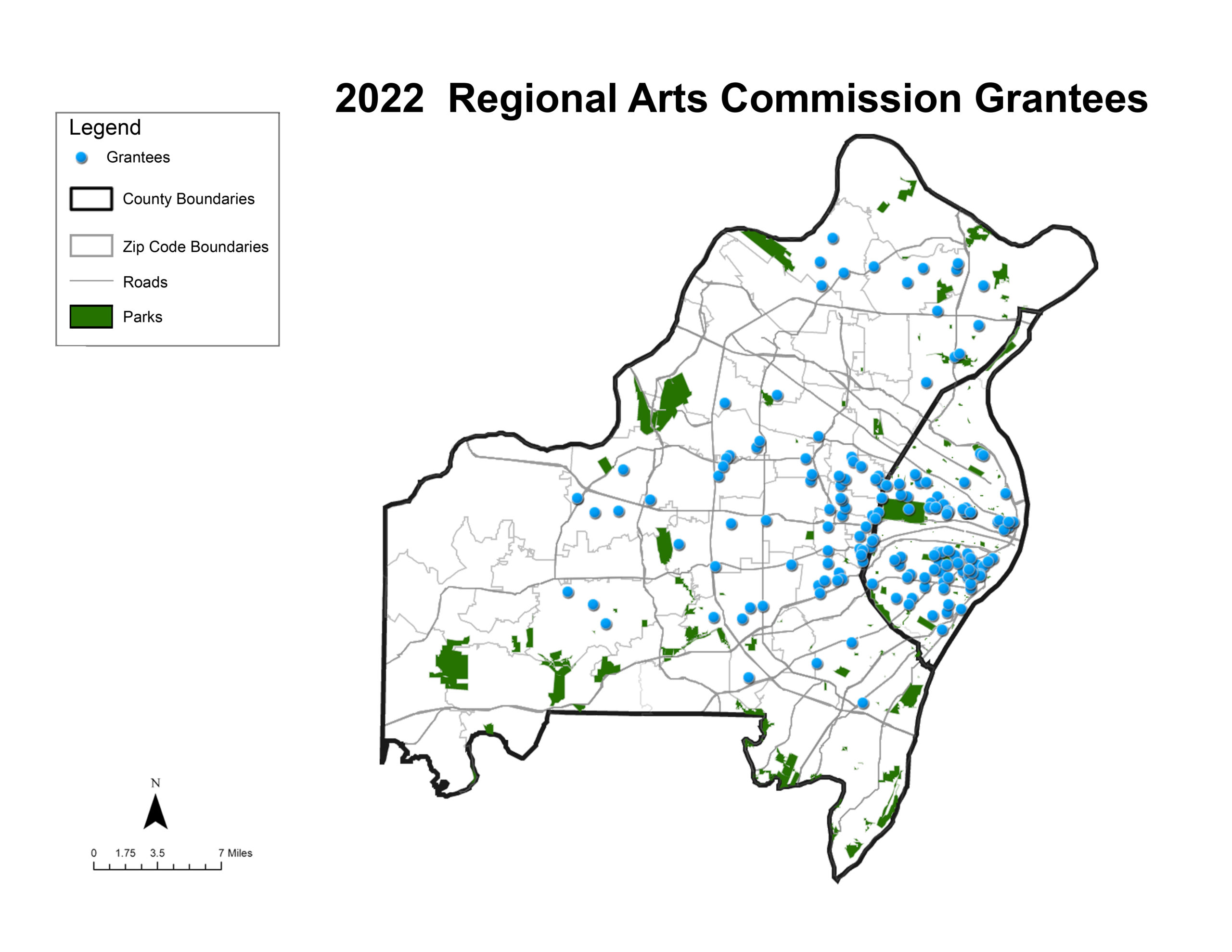For the first time in nearly two years, the Regional Arts Commission (RAC) of St. Louis is proud to announce more than $1.15 million in new grant funding for local artists and arts programming across the region. More than 90 arts programs and 85 individual artists will receive direct financial support in 2022.
The announcement was made June 15 at Artists First in Maplewood, a nonprofit, inclusive art studio that empowers artists of all abilities. The organization received a $13,500 Program Support Grant this year from RAC.
“The Regional Arts Commission of St. Louis has led the way in the survival and promotion of the arts in St. Louis,” said Sheila Suderwalla, Artists First executive director. “Artists First is grateful not only to be a partner with RAC but also for their support in championing artists of all abilities.”
“This is a big accomplishment for RAC,” said Vanessa Cooksey, RAC president and CEO. “It demonstrates the high-level of teamwork between our Board of Commissioners and staff as we worked together to ensure excellent stewardship of public dollars and public trust. We made significant administrative and operational sacrifices over the last two years to guarantee grants and programs benefiting St. Louis’ arts organizations and artists were funded at the highest possible level within our means.”
Nearly all RAC’s funding comes from the hotel/motel tax earned in St. Louis City and County. Since April of 2020, RAC lost more than 60% of its revenue. Due to the drastic loss, all but one of its programs were cancelled and its General Operating Support grant payments were cut by 75%.
Before the pandemic, RAC awarded an average of $3 million in grants every year. Though hotel/motel revenue is still years away from pre-pandemic levels, RAC Commissioners worked to avoid a complete shutdown of its grantmaking during this tumultuous time. In March, the Commission approved a plan to explore new and diverse revenue streams to ensure grants could be fully funded in the future. In addition, RAC is asking City and County elected officials for a direct allocation of American Rescue Plan Act (ARPA) funds.
The recovery of the St. Louis arts and culture sector is essential for the economic wellbeing of the region. According to the American for the Arts’ Arts and Economic Prosperity Report, the St. Louis arts and culture sector brings in nearly $600 million in economic activity every year and provides more than 19,000 full-time jobs.
“Sometimes we forget that St. Louis is an arts town,” Cooksey added. “We have 400+ arts and culture nonprofits, dozens of for-profit entertainment venues and 15,000 working artists driving our region’s creative economy. As a whole, the sector brings more than 12 million people to St. Louis every year–which is more than all professional and collegiate sports combined.”
One of those working artists is Jess Dugan. Through their photography, videography and writing, Dugan explores issues of identity. Their work has been widely exhibited and is in the permanent collections of over 40 museums throughout the United States.
“Support from the Regional Arts Commission has played a significant and pivotal role in my career,” said Dugan. “In 2016, a grant from RAC allowed me to take the leap to working full-time as an artist, which I continue to do. Over the past several years, I have received numerous Artist Support Grants, allowing me to purchase essential studio equipment, produce traveling exhibitions, and so much more. I am incredibly grateful to RAC for all the support they provide to artists working in St. Louis.”
“Grantmaking is the cornerstone of RAC’s work,” said Cheryl D.S. Walker, RAC Commission Chair. “In alignment with our current Strategic Plan, we took several steps to ensure this year’s process was more efficient and effective for our grantees. RAC shortened applications to make the process easier and did not require matching funds, which made our grant opportunities more accessible. We also surveyed applicants to collect feedback on how to improve the application process for next year and beyond.”
In the survey taken after the grant application process was completed, nearly 66% of Program Support Grant applicants agreed the no match requirement made it easier for them to apply for a grant this year. This was especially true for small arts organizations. Additionally, more than 75% of all applicants were satisfied with their experience applying for a RAC grant.
“These changes are the first of many,” said Cooksey. “We are strengthening our organizational infrastructure and prioritizing equity, diversity and inclusion in response to the continued impacts of COVID-19 on the arts and culture sector. Our leadership and collaboration across sectors and geographies will help grow and sustain RAC for decades to come – ensuring a full creative life for every St. Louisan.”

- Program Support grantees are located in 40 zip codes across Missouri. In St. Louis City and County, about half of all zip codes (49.2%) are home to a Program Support grantee. Artist Support grantees are located in 80.6% of zip codes.
- On average, there are five 2022 Regional Arts Commission grantees per zip code in St. Louis City and County.
- At least one Program Support grantee serves each zip code in St. Louis City and County. On average, each zip code is served by 9 Program Support grantees.
- In zip codes with a large number of Program Support grantees, like Grand Arts Center, more than 20 organizations offer programming.


Follow Us On Social Media